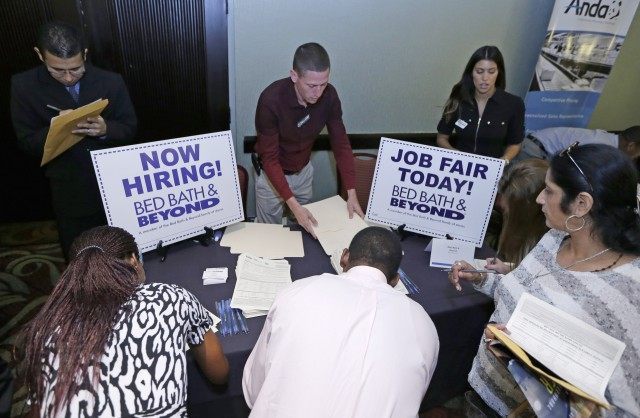The UCLA Anderson Forecast released on Friday predicts that California will help drive the nation’s economic recovery this year with an expected labor force growth of 128,000 new workers, or +2.1 percent. But Forecast’s Director Ed Leamer cautioned that while California payrolls reached a new high of 17.8 million jobs, the number is still running 16 percent behind states’ long-term trend. Leamer’s concluded, “We’re in a world of hurt.”
Widely respected for its ability to envision economic trends in California and the nation, the Anderson Forecast is closely watched by Wall Street and major business interests to help set their strategy for the next few years. UCLA national prediction is a return to a three percent GDP growth rate by the third quarter through the end of 2016.
The national economy “will likely be generating jobs at a 250,000 per month clip and the unemployment rate will close out 2015 at just below 5 percent,” the report said. California’s forecast calls for continued steady gains in employment through 2016.
But Director Ed Leamer stated that due to America’s shifting demographics, the 25 to 64-year-olds who have comprised the nation’s “working-age population” will soon be permanently shrinking for the first time. He predicts by 2020 there will only be 500,000 new workers a year coming into the economy, compared to 2 million workers a year over most of the post-WWII era. Leamer cautions that this change will result in slower GDP growth and a near-collapse of household formation after 2022.
Forecasters noted that the demand for top tech talent is driving salaries sky high and helped fuel 900,000 new California jobs since 2009. The state has achieved a record 17.8 million jobs in the civilian labor force, but the growth of 1.5 million more Californians joining the labor force left 600,000 Californians still without jobs.
UCLA senior economist Jerry Nickelsburg commented that the increases in construction, automobiles, and business investment will continue to drive consumer demand and job growth in the state. “We expect California’s unemployment rate to be insignificantly different from the U.S. rate at 4.9 percent during the forecast period.” But he also cautions that “trends in U.S., immigration, and natural growth in the working age population” will have an elevated impact on California.
Nickelsburg estimates California employment growth of +2.5 percent this year, +2.1 percent in 2016, and +1.3 percent in 2017. Real after-inflation personal income growth is expected to grow faster at +4.5 percent in 2015, +4.4 percent in 2016, and +3.5 percent in 2017. The California unemployment rate that peaked at 12.3 percent five years ago is predicted to remain at 6.2 percent through the end of this year. Next year, the rate should drop by a full percentage point and fall slightly in 2017 to 5 percent.
Nickelsburg pointed out that one of the statistical reasons the unemployment rate has substantially fallen is “the current economic expansion has had an unusually large spike in the number of long-term unemployed.” He believes the state’s “employment potential” has permanently declined; since manufacturing jobs have been departing, many California workers have become so discouraged that they gave up looking for a job.
William Yu, who analyzes the high tech industries for UCLA, commented that Northern California’s tech sector is leading the nation in job growth as Silicon Valley jobs have spread out into San Mateo and San Francisco.
“The high tech sector is growing in counties across the U.S., though Los Angeles is not among the top leaders in terms of patents, capital, or salary.” Yu did not comment on why Southern California has trailed behind. But he added that “Silicon Beach is on the rise, and hopefully, it will continue to rise.”

COMMENTS
Please let us know if you're having issues with commenting.